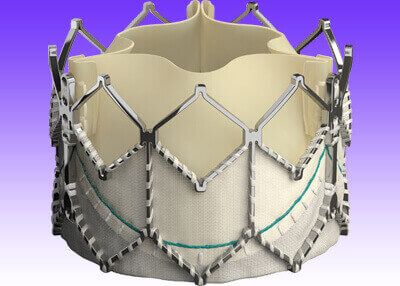The size of the original bioprosthetic valve impacts long term mortality, as does the type of bioprosthetic valve used in percutaneous reinterventions.

The number of patients with failed bioprosthesis is on the rise, mainly due to increased life expectancy. Valve-in-valve (ViV) transcatheter aortic valve replacement (TAVR) has become more and more common these days and might even become the gold standard.
There is no large-scale research on long term followup of these patients, both in terms of mortality and reintervention.
This analysis recently published in the European Heart Journal included 1006 patients receiving ViV with mean age 77.7 ± 9.7 years and STS-PROM of 7.3%.
Patents were treated both with the self-expandable CoreValve/Evolut and the balloon expandable SAPIEN/SAPIEN XT/SAPIEN 3.
Read also: TAVR as Anti-Inflammatory? An effect few imagined.
Survival was lower in patients with smaller dysfunctional valves (internal diameter > 20 mm) compared against patients with bigger prosthesis (33.2% vs. 40.5%, respectively; p=0.01).
The smaller dysfunctional valves were independently associated with mortality (HR 1.07; IC 95% 1.02–1.13), as was age (HR 1.21 IC 95% 1.01–1.45) and the non-femoral approach (HR 1.43 IC 95% 1.11–1.84).
There were 40 reinterventions, most frequently among patients with pre-existing prosthetic mismatch and malapposition of the new device.
Conclusion
In valve in valve, the size of the original valve impacts on long term mortality. The kind of prosthesis used in ViV could affect the need for reintervention.
Original Title: Long-term outcomes after transcatheter aortic valve implantation in failed bioprosthetic valves.
Reference: Sabine Bleiziffer et al. European Heart Journal (2020) 41, 2731–2742. doi:10.1093/eurheartj/ehaa544.
Get the latest scientific articles on interventional cardiologySubscribe to our weekly newsletter
We are interested in your opinion. Please, leave your comments, thoughts, questions, etc., below. They will be most welcome.





